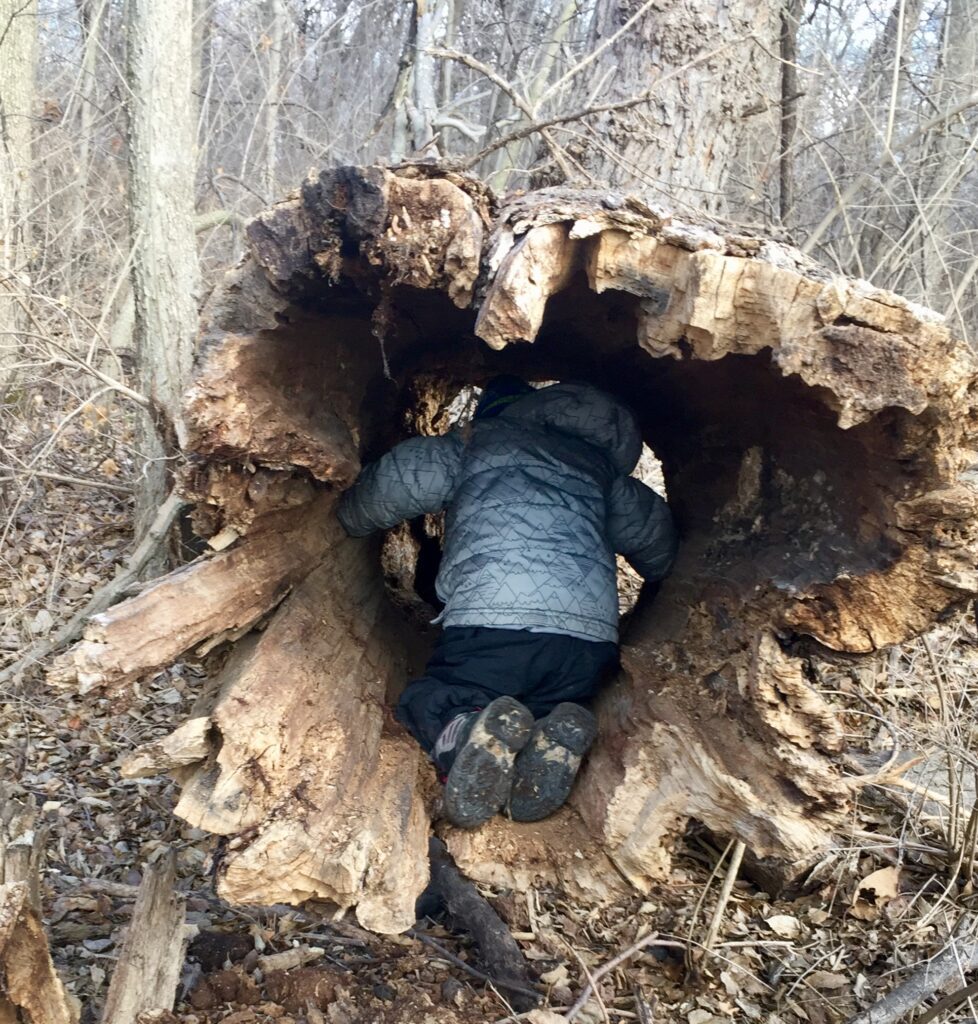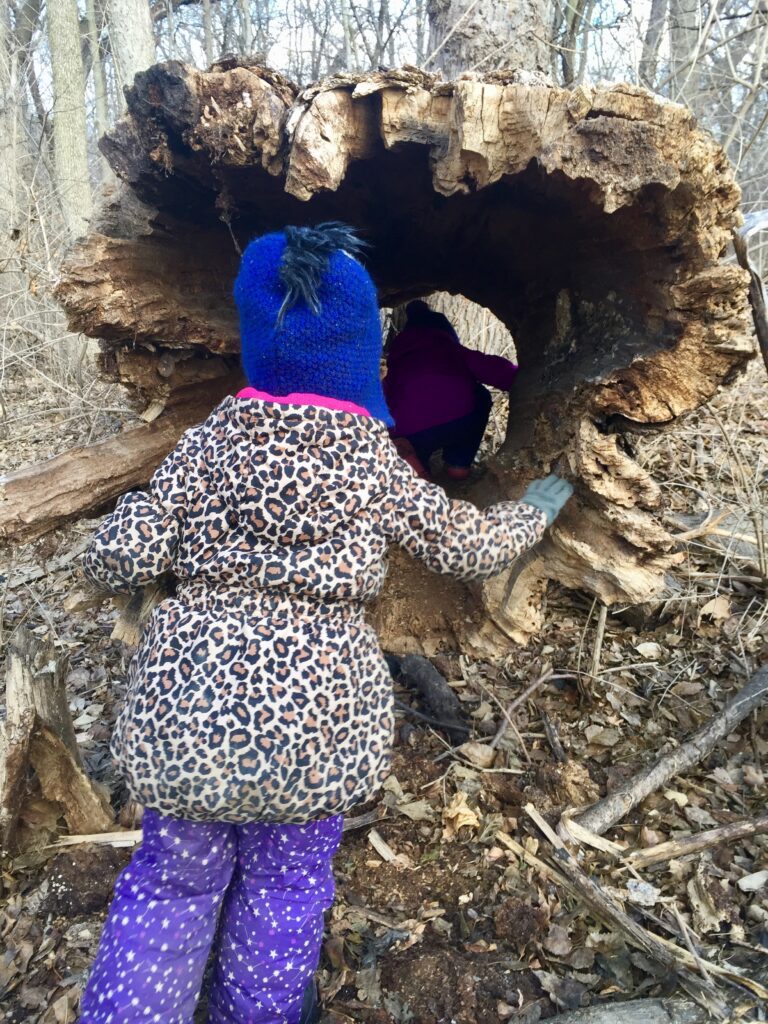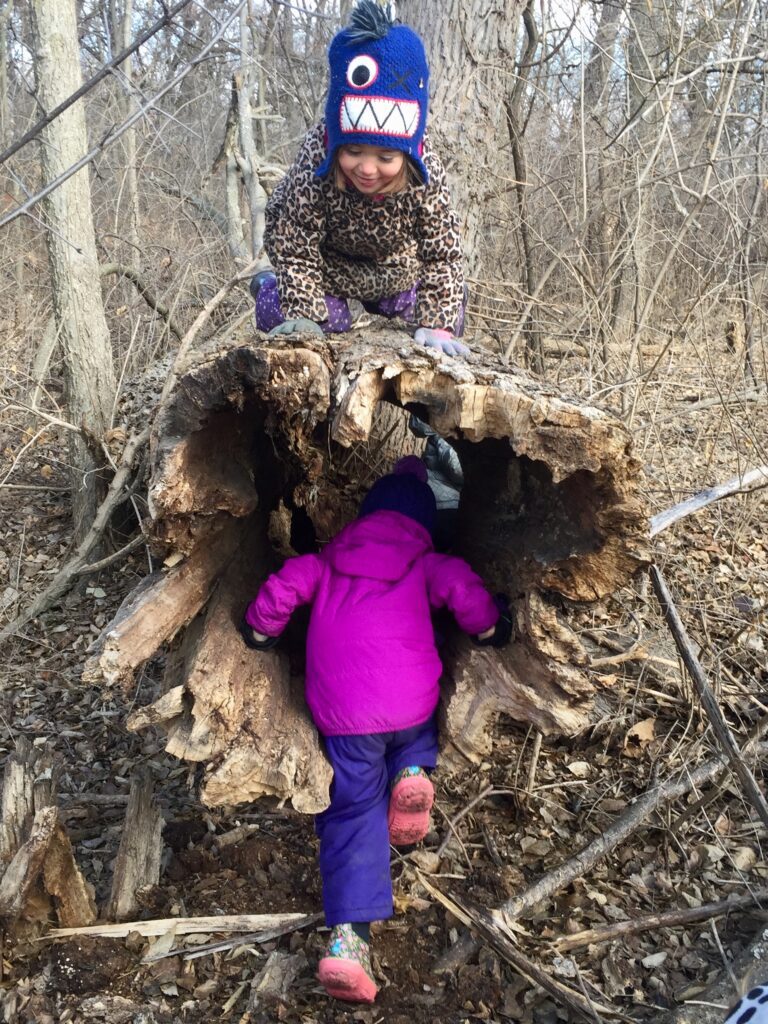Inside, Outside and Through a Log

“Look! A log with a hole in it! Can we crawl into it?”
Our hike comes to a complete halt as the children regard the hollowed-out log with a sense of wonder. This gift from nature is an irresistible invitation to investigate and play!
Physical play like this expands a child's vocabulary and fosters a natural understanding of mathematical concepts such as spatial relationships. When a child can climb through a cylindrical shape, the word "through" makes a lot more sense.
So of course we should not only allow but encourage our kids to explore by going through and climbing on top of to look down below.
An understanding of these spatial relationships—where objects are in relationship to something else—lays the foundation for later math learning.
Our encounter with the hollow log invited us to explore many of the following spatial concepts:
- Inside/outside
- In front of/in back of/behind
- Low/high
- Above/below
- Across
- On top of
When children understand spatial relationships, this enables them to talk about where things are located. Their understanding of spatial relationships grows as they incorporate spatial vocabulary words into their play.
Geometric shapes are another kindergarten common core standard. When children play with and in these shapes, the learning becomes deeper, more intentional and more relevant.

“It looks like the inside of that slide at the park!” observes Avery as she leads her fellow explorers through the hollow log.
“Yes, the tube slide!” Violet confirms.
This interchange prompts a barrage of other comparisons. As I introduce the word cylinder, the children continue to brainstorm about other objects that this hollow log brings to mind.
We talk about cans and batteries and toilet paper rolls, which naturally brings roars of laughter because members of the under-five set find nothing funnier than a toilet paper roll!
Shape recognition is a math concept that many young children will master before number skills. When we return to the block area later in the week, the children identify the cylindrical blocks, incorporating the knowledge and vocabulary that they learned during our encounter with the hollow log.
Soon the children are recreating our hiking expedition with blocks, using different geometric block shapes to represent the trail, the trees and the bridge we crossed. Next to the trail, they place a cylindrical block to represent the hollow log.
The log that inspired an entire morning of math learning—and an exploration of spatial relationships and geometric shapes through age-appropriate play—will be a source of reference and math knowledge for many years to come!

Hikes through the woods or neighborhood walks are full of opportunities to find math—often through the eyes of the child!
When you begin to notice opportunities like these, you can use them to expand your child's spatial vocabulary and awareness of geometric shapes.
All of these moments will expose your child to math in a playful and hands-on way.
Keep it simple and easy—and don't forget to have fun!
I love this, Diann. I remember when I learned about adverbs. My teacher said, “an adverb is anything a squirrel can do with a log.” This reminded me of that. Over, under, through……Great pics as well.
Hi Jen! Thank you for the kind words! What a great teacher! Isn’t it funny how we can remember little tricks like this?